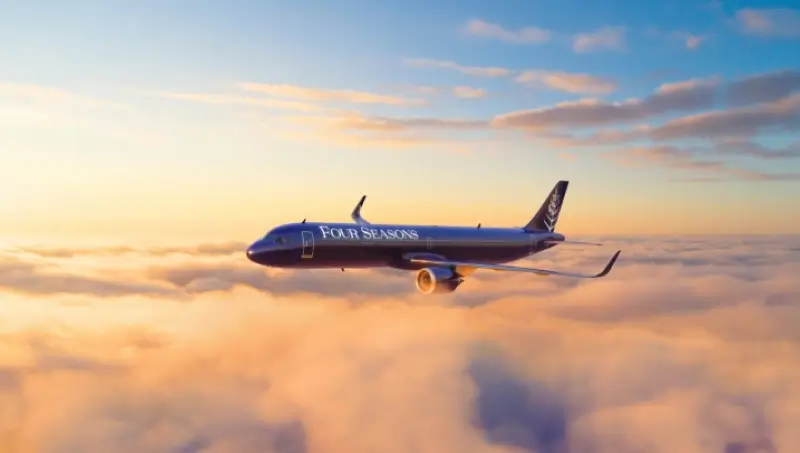
Low-cost carriers fight for hearts and minds
May 13, 2015

Low-cost carriers are increasingly competing not only on price but also on customer loyalty and brand perception. As travelers seek affordable options, airlines are enhancing their services, focusing on customer experience, and employing innovative marketing strategies to differentiate themselves. These carriers are leveraging social media and personalized promotions to engage potential flyers, showcasing their unique value propositions beyond just low fares. Additionally, they are investing in technology to streamline operations and improve convenience, aiming to win over consumers who prioritize both budget and quality. As the market grows more competitive, the battle for hearts and minds intensifies among these budget-friendly airlines.
The airline industry is undergoing significant changes as low-cost carriers (LCCs) compete fiercely for market share. These airlines have transformed the travel landscape by offering affordable options, making air travel accessible to millions. In this article, we will explore how low-cost carriers are vying for the hearts and minds of consumers, their strategies, and the impact on traditional airlines.
The Rise of Low-Cost Carriers
Low-cost carriers began emerging in the late 20th century, fundamentally altering the way people travel. By adopting a no-frills approach, these airlines have successfully minimized operational costs, allowing them to offer lower ticket prices. This affordability has attracted a diverse range of travelers, from budget-conscious families to business professionals seeking economical travel options.
Competitive Strategies of Low-Cost Carriers
In their quest for customer loyalty, low-cost carriers employ various strategies to differentiate themselves in a crowded market. Below is a table summarizing some of the key tactics used by these airlines:
| Strategy | Description |
|---|---|
| Dynamic Pricing | Utilizing algorithms to adjust ticket prices in real-time based on demand, competition, and other factors. |
| Ancillary Revenue | Generating income through additional services like baggage fees, seat selection, and onboard refreshments. |
| Route Optimization | Focusing on high-demand routes with lower operational costs, often flying to secondary airports. |
| Digital Marketing | Leveraging social media and online platforms to engage customers and promote special offers. |
Customer Engagement and Loyalty Programs
To build lasting relationships with travelers, low-cost carriers have shifted their focus towards customer engagement. Many airlines are developing loyalty programs that reward frequent flyers with discounts, priority boarding, and exclusive offers. This strategy aims to enhance customer retention and encourage repeat business.
For instance, airlines like Ryanair and EasyJet have introduced user-friendly mobile applications that allow passengers to book flights, manage bookings, and receive real-time updates. By investing in technology, these low-cost carriers are not only improving the customer experience but also fostering a sense of loyalty among their passengers.
Challenges Faced by Low-Cost Carriers
Despite their success, low-cost carriers face several challenges in maintaining their competitive edge. The following are some of the primary obstacles:
- Rising Operational Costs: As fuel prices increase and labor costs rise, maintaining low fares becomes increasingly challenging.
- Regulatory Pressures: Compliance with safety and environmental regulations can strain resources and limit operational flexibility.
- Market Saturation: The burgeoning number of low-cost airlines has led to a saturated market, making it harder to stand out.
The Impact on Traditional Airlines
The emergence of low-cost carriers has forced traditional airlines to reevaluate their business models. Many established carriers have introduced their own budget options to compete directly with LCCs. The following table illustrates how traditional airlines are adapting to this new landscape:
| Traditional Airline Strategy | Description |
|---|---|
| Hybrid Models | Creating low-cost subsidiaries to attract budget travelers while maintaining full-service options. |
| Enhanced Customer Experience | Focusing on premium services, such as better in-flight meals and spacious seating, to justify higher fares. |
| Partnerships and Alliances | Forming strategic alliances with other airlines to expand route networks and improve operational efficiency. |
Future Trends in Low-Cost Aviation
As the competition intensifies, low-cost carriers are expected to evolve alongside changing consumer preferences. Key trends that may shape the future of LCCs include:
- Sustainability Initiatives: Increasing pressure for greener operations may drive low-cost airlines to invest in more fuel-efficient aircraft and sustainable practices.
- Personalization: Advanced data analytics will enable airlines to offer tailored services, enhancing the overall customer experience.
- Technology Adoption: Continued investment in technology, including AI and machine learning, will streamline operations and improve customer service.
Conclusion
As low-cost carriers fight for the hearts and minds of travelers, their innovative strategies and adaptability will play crucial roles in shaping the future of air travel. By focusing on affordability, customer engagement, and operational efficiency, LCCs are poised to continue their expansion and redefine the aviation landscape for years to come. The challenge for traditional airlines lies in their ability to compete in this new environment while maintaining the quality and service that travelers expect.
Related Articles

Explore Thailand: The Best Islands to Visit for Paradise, Adventure, and Relaxation

The Ultimate Guide to the Best Islands in Thailand for Your Next Getaway

Do babies need passports? How to get a passport for a newborn

How to get a U.S. passport fast: here’s how to expedite the process

What is Mobile Passport Control: 5 reasons why you should use it

SENTRI vs. Global Entry: A detailed guide

Do you need a passport to go to the Bahamas? Let’s find out

Do you need a passport to go to Mexico? A detailed guide

Do you need a passport to go to Canada? We got the answer

Do You Need a Passport for a Cruise: An Essential Travel Guide

Booster Seat Requirements: All the Rules to Follow in Your Rental Car

What Are the World’s Most Powerful Passports, and How Does Yours Rank?

How to Take a Passport Photo at Home: A Helpful Guide

You've got to have heart! Southwest's new livery

Your opinion: Should water be free on low cost carriers?

Young women bolder than guys as solo travellers
